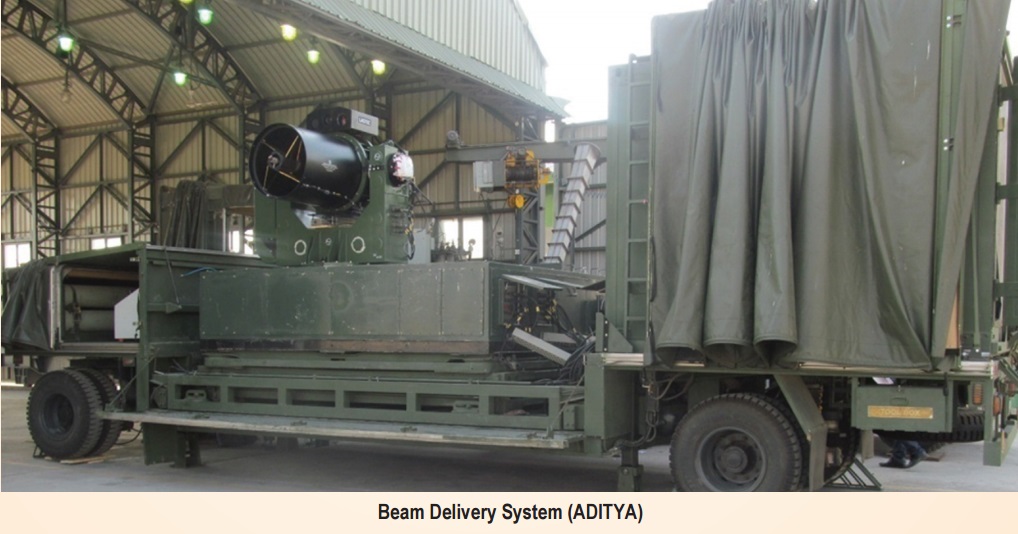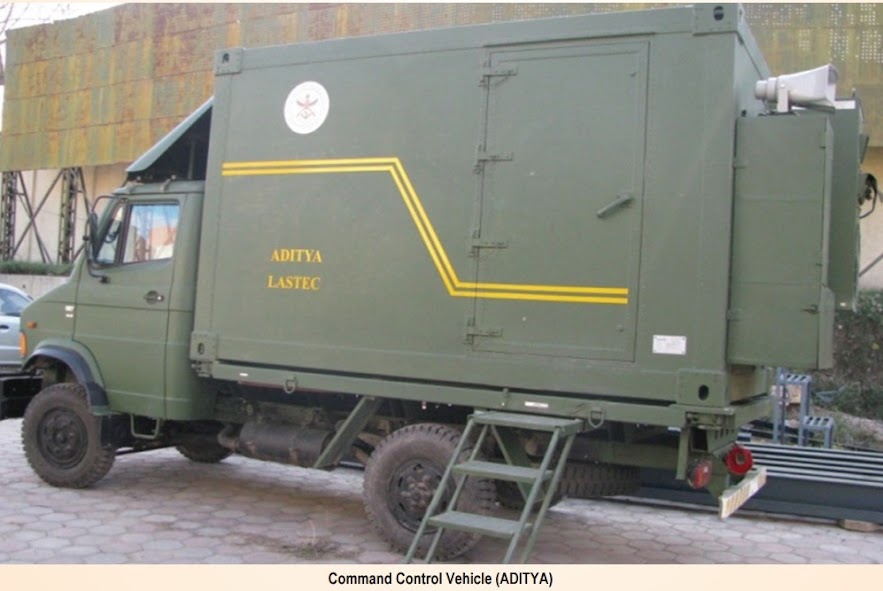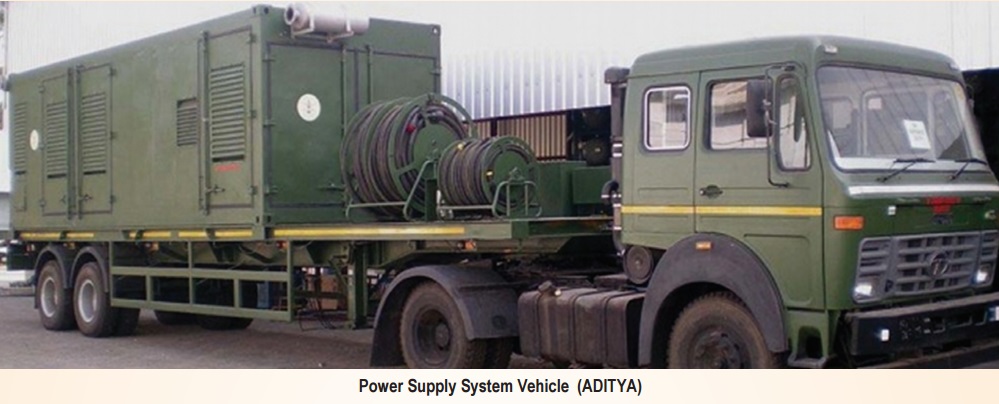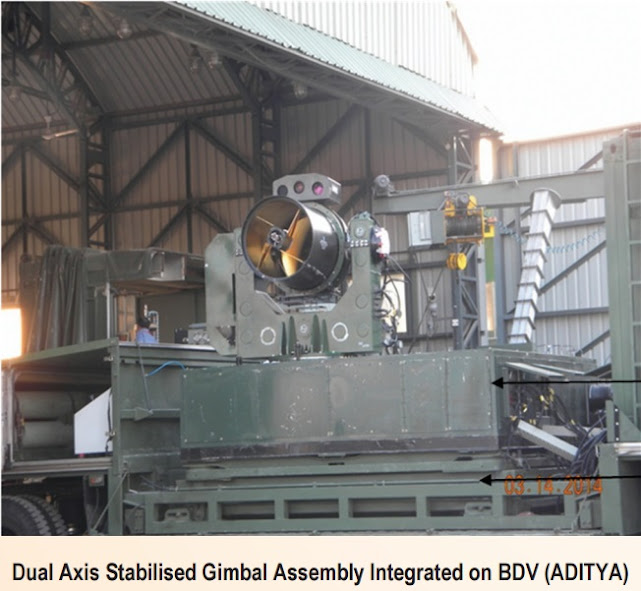DRDO's CHESS (Center for High Energy Systems and Science), Hyderabad is developing Directed Energy Weapon (DEW) systems for use by the Indian Armed Forces (AFs).
Laser Science and Technology Center (LASTEC) is developing laser source technologies for Directed Energy Weapon (DEW), as also for dazzling and imaging applications.
LASTEC Capability Development
LASTEC has developed core technologies including Gas Dynamic Laser (GDL) and Chemical Oxygen Iodine Lasers (COIL) and demonstrated 100 kW (multi mode) GDL and 20 kW (single mode) COIL sources.
LASTEC's Aditya Gas Dynamic High Power Laser based Directed Energy System
LASTEC's Aditya project was an experimental test bed to seed the critical DEW technologies. The Gas Dynamic High Power laser based Directed Energy System can be broadly divided into two major subsystems:
- Laser Power Source
- Beam Delivery System
The Laser beam used in a DEW is subject to attenuation (loss of intensity) due to atmospheric air and jitter due to the turbulence within the atmospheric air. The damage caused by the beam progressively reduces with target distance.
In order to cause the stipulated damages at 0.8 km and 2.5 km distance using a 0.7 m aperture telescope, laser power of the order of 100 kW is required . The beam delivery system has to simultaneously perform several roles. It acquires and tracks the distant static and moving target in real time and points and focuses the laser beam on the target. The adaptive optical system has to compensate for the jitter and wave front distortion of the laser beam from the source.
The technology related to laser source, beam delivery and issues related to system integration on mobile platforms were addressed during the execution of the Aditya project which will provide useful input to future laser weapon programs of DRDO
You can read more about the Aditya project here.
DEW for Use Against UAVs
One of the DEW weapon systems being developed would target UAV's.
Project Progress
In July 2015, CHESS invited tenders for 3 radio control (RC) aero models with minimum wingspan of 1600-mm, min. wing area of 800 sq in., and min fuselage length of 1200-mm. The aero-models should be able to fly at altitudes in excess of 400-m.
It's likely that the procurement is aimed at field testing the IIR sight CHESS has developed for its anti UAV weapon. Typically battlefield mini UAVs fly at around 1000-ft AGL in order to stay clear of small arm fire.
Earlier on March 2, 2015 CHESS invited tenders for Off-axis concave and convex parabolic mirrors.
The concave mirror is required to have a parent focal length of 2000mm and mirror diameter of 150mm, while the convex mirror is required to have a parent focal length of 200mm and a mirror diameter of 25mm.
In early July 2015, DRDO's IRDE (Instruments Research & Development Establishment), Dehradun invited tenders for supply of High Resolution thermal imager for CHESS platform.
The IRDE tender seeks a Thermal Imager based on Pelican-D 640x512 MWIR IDDCA with 14.5X zoom capability. The Imager is required to have recognition range capability of 5-km against a 1.5m x 3m UAV target.
IDDCA (Interleaved Double Dynamical Clustering Analysis) is a sampling algorithm based on clustering.
It appears that the imager being sought by IRDE would be used to aim a DEW developed by CHESS for use against UAVs.
Indian Navy's Interest in DEW
An HT report dated July 20, 2015 quoted a senior navy officer as saying that the Navy plans to develop and deploy high-energy lasers and high-power microwave weapons on Navy ships.
"The navy’s policy and plans wing has identified directed-energy weapons as a key long-term development project. We are sharpening focus on it,” said another officer familiar with the plan.
IDP Sentinel members can read additional details on DRDO's DEW project at
Directed Energy Weapon (DEW) Systems (IDP Sentinel)




No comments:
Post a Comment